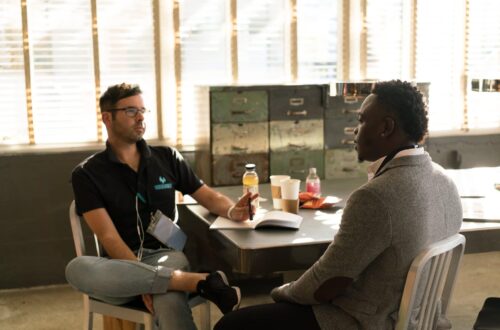
Brainstorming? Focus On 10% Right
As engineers and tech leaders, we are rewarded for our analytical skills in finding code defects and design issues early on. We often keep applying this same trait to the people we work with. When we hear an idea, we find the possible shortcomings and “defects” and point those out. With all good intentions, we assume it will be efficient if we say it sooner, as it will save time for everyone.
The downside of this approach is we are dealing with people who have emotions and egos. When we shoot down someone’s idea, we hurt their feelings – they feel discouraged and unappreciated. Eventually, we lose their engagement in a team or organization, which is a significant loss.
I often hear this feedback about accomplished software developers, “they are excellent at solving deep problems but don’t get along with others.”
When I work with folks with such challenges, we take the time to dig deep and find the root cause of such behavior. Without exception, it turns out that, like everyone else, they are focused on delivering a quality product, and sometimes their bar is even higher. Their impatience with the “slow” process of deciding as a team gets in the way.
During a design meeting or brainstorming session, when we take the time to build on each other’s ideas, it may seem slow, but in the long run, it saves the time of fixing the issues caused by a lack of buy-in and shared understanding. Instead of problems, focusing on what is right about an idea could help in this phase. When someone shares an idea, it is very unlikely that we will agree with everything about it. If we are not conscious, our brain automatically goes to find reasons why it won’t work (our brain’s negativity bias). What if we focus on listening without assuming we have to commit to it? Even if it is a crappy idea, let’s challenge ourselves to find one good quality.
Example
You and your team are in a meeting going through a list of the product issues (bugs). Some of those fixes might delay the release date.
Person 1 says:
“Let’s keep the design as is and add a patch later.”
I bet your mind is already thinking if we release this buggy (faulty) product, it will create unhappy customers, and the team’s/company’s credibility will be at stake. Write down that thought so you don’t forget. Now, take a breath and see the underlying principle of person 1’s idea. They seem to be trying to provide the product to the customer by the promised timeline. Now you have found what is right about the idea. In your response, say this:
“I like that you want to honor our release date and give the new product to our customers sooner than later.”
You may get their attention as you are aligning with their intention. Now add this:
“And I wonder how to make the end-user experience smoother as well so they stay as our happy customers.”
This way, you are building on top of the other person’s idea without fighting or shooting them down. I am sure your brain is already coming up with several reasons why this approach will not work for your situation. I challenge you to find what is right about this approach.
I was introduced to this idea in 2015 as “Yes-And,” but it took me a while to internalize why it is so powerful. I recently took a class with the proponent of Positive Intelligence, Shirzad Chamine. He said, find 10% right about any idea. Only 10%! Even the most skeptical person could start there. I even applied this with myself. When I get an idea for writing, it is in a very rough form. I can easily get discouraged by the lack of enough evidence or stories. These days I force myself to write it down and acknowledge that there is some value to it. As I iterate, I eventually add more substance to that initial idea. Somewhere between the 3rd to 5th iteration, I feel good to publish it for a bigger audience. If I hadn’t honored the initial idea, I wouldn’t get to see the final polished product.
If you have read up to this point, what is the 10% you liked about this article? Can you use it maybe with your partner or spouse while planning a vacation?
Feature photo by MING Labs on Unsplash




